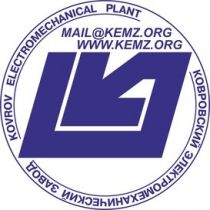Global Space In-Orbit Refueling Market Research Report 2022: Market to Grow by a Staggering 103.85% During 2026 and 2032 - ResearchAndMarkets.com
The "Space In-Orbit Refueling Market - A Global and Regional Analysis: Focus on Application, End User, Capability, and Country - Analysis and Forecast, 2022-2032" report has been added to ResearchAndMarkets.com's offering.
The global space in-orbit refueling market is estimated to reach $1,090.8 million by 2032 at a compound annual growth rate (CAGR) of 103.85% during the forecast period 2022-2032 (CAGR:2026-2032)
The major factor driving the market growth is expected to be the increase in demand for sustainable and reusable space systems.
With the increasing number of satellites going into space, the demand for satellite servicing has been rising. In the future years, refueling capabilities are expected to become a need rather than an option for satellite operators. Several market players have already started demonstrations and some have been successful. Commercial players are expected to extract the maximum benefit of the space in-orbit refueling technologies.
Note: Based on primary interviews and key developments by companies, the market for space in-orbit refueling is expected to observe scheduled commercial services by 2026.
Market Lifecycle Stage
Space in-orbit refueling has been on the wish-list of satellite operators for decades, however, even though the concepts existed, no company was able to materialize the technology.
However, in the past 5 years, multiple established players and startups have entered the market and are now full-fledged working on the refueling capabilities. Massive amounts of investments are pouring into the industry and multiple collaborations are happening in order to co-develop new technologies.
Over 15 years of research and development on satellite refueling technologies have bought us to a stage where key players are performing successful demonstrations of in-orbit refueling and services in-orbit.
Additionally, commercial players with large constellation sizes or heavy communication satellites are expected to adopt the market first. Following this, government agencies like NASA and ESA are also stepping forward to develop technologies and fund startups in the in-orbit refueling industry.
Applications, such as site earth observation, communication, and navigation, are some of the areas where satellites are expected to be refueled in the coming years. Moreover, newer technologies, such as advanced docking systems, fueling ports, and artificial intelligence software are expected to support the growth of the space in-orbit refueling market over the 2022-2032 forecast period.
The players operating in the space in-orbit refueling market are engaged in several strategies, including strategic partnerships, contracts, agreements, and business expansion. The marketing strategies will help the readers understand the revenue-generating strategies adopted by the in-orbit service providers operating in the space in-orbit refueling market.
For instance, Orbit Fab, Inc and the U.S. Air Force Research Laboratory have signed a technology-sharing agreement to share details regarding RAFTI. The company markets its products to all different layers of the military, intelligence, and commercial satellite community. The Air Force will help Orbit Fab review some of the technologies that aided in developing them. More specifically, they are going to advise on requirements and design elements, as well as provide testing and qualification access at several governmental facilities throughout the country.
In February 2022, Northrop Grumman-owned SpaceLogistics signed a launch agreement with SpaceX and a contract with Optus for the sale of its Mission extension pod. Under the agreement, SpaceX will be responsible for providing launch services for the 2024 MRV and MEP launches.
Market Segmentation
Based on application, the space in-orbit refueling market is expected to be dominated by the communication segment owing to its technological and economic feasibility. Communication and Earth observation applications are expected to see the first initial missions for refueling.
Based on end-user, the space in-orbit refueling market is expected to be dominated by commercial end-users. Commercial end-users are expected to garner significant share and growth due to their priority requirement and economic feasibility. Commercial satellite operators with large satellite constellations and heavy communication satellites are expected to adopt the technologies faster compared to any other segment.
During the forecast period, North America is expected to dominate the space in-orbit refueling market (by region). The significant presence of key companies engaged in developing space in-orbit refueling services is a major factor responsible for the region's growth.
A higher number of collaborations between various service providers, satellite operators, and enabling technology providers is another factor driving the market growth. An increasing number of start-ups and emerging players and successful demonstrations and increasing investments by key players in the market are also contributing to the market growth.
Recent Developments in the Space In-Orbit Refueling Market
- In January 2022, Astroscale Holdings Inc. and Orbit Fab, Inc signed a commercial agreement for refueling LEXI in the GEO orbit. LEXI is the first satellite that is designed to be refueled. As per the agreement, Orbit Fab, Inc will refuel Astroscale's fleet of LEXI Servicers with up to 1000 kgs of Xenon Propellant.
- To develop technologies for cryogenic propellant storage and transfer, with these awards, NASA is investing in technologies for the storage and transfer of cryogenic propellants in space. Four awards worth more than $250 million went to companies working on cryogenic fluid management.
- To demonstrate refueling a GEO satellite, Northrop Grumman's Mission Extension Vehicle-1 (MEV-1) docked with Intelsat 901 on 25th February 2020 and pushed the satellite back to its normal orbit. Northrop Grumman's MEVs are expected to give more than 15 years of life extension to these satellites along with providing spacecraft inspections, inclination changes, and orbit repair.
- In April 2022, Washington's Defense Innovation Unit (DIU) is planning to provide commercial refilling services in near the prime space real estate of Geosynchronous Orbit, commonly referred to as GEO. It's also planning on creating a "bulk fuel depot" in the orbits. DIU is looking for companies with the capability for bulk liquid and gas propellant storage (>5,000 kg) in orbit. Two of the propellants include hydrazine and liquid oxygen.
- In April 2022, Orbit Fab, Inc and Neutron Star Systems have announced a partnership for the co-development of sustainable propulsion capability and satellite refueling technologies. The agreement will help to increase the range of refuellable propellants by combining NSS propellant-agnostic electric propulsion technology with Orbit Fab's refueling interfaces and tankers.
Key Market Players and Competition Synopsis
The companies profiled in the study have been selected based on inputs gathered from primary experts and analysis of the companies' product portfolios, key developments, and market penetration.
Space in-orbit refueling as a technology is still in the development and demonstration phase. However, there are several established players and startups that have entered the market and have made considerable progress.
Some prominent established names in this market are:
- Astroscale Holdings Inc.
- Altius Space Machines, Inc.
- D-Orbit SpA
- Lockheed Martin Corporation
- LMO Space
- Maxar Technologies Inc.
- Momentus Space
- Orbit Fab, Inc.
- Obruta Space Solutions
- Orbit Recycling
- SpaceX
- SpaceLogistics (a subsidiary of Northrop Grumman Corporation)
- Space Machines Company
- Starfish Space Inc.
- Tethers Unlimited, Inc.
Key Topics Covered:
1 Markets
1.1 Industry Outlook
1.1.1 Space In-Orbit Services: Overview
1.1.1.1 Life Extension
1.1.1.2 De-Orbiting
1.1.1.3 Satellite Inspection and Repair
1.1.1.4 Relocation
1.1.2 Emerging Technology Trends
1.1.2.1 Life Extension Vehicles
1.1.2.2 Orbital Propellant Transfer Vehicles
1.1.2.3 Bulk Fuel Depots
1.1.2.4 Satellite Docking Systems
1.1.3 Ongoing and Upcoming Program
1.1.3.1 Lockheed Martin's Augmentation System Port Interface (ASPIN) Program
1.1.3.2 Space Infrastructure Dexterous Robot (SPIDER) Program
1.1.3.3 Robotic Servicing of Geosynchronous Satellites (RSGS) Program
1.1.3.4 NASA's Robotic Refueling Mission (RRM)
1.1.3.5 ESA's Esprit Program
1.1.3.6 Orbital Express Space Operations Architecture Program
1.1.4 Start-Up Landscape
1.1.5 Patent Analysis
1.2 Business Dynamics
1.2.1 Business Drivers
1.2.1.1 Increase in Demand for Sustainable and Reusable Space Systems
1.2.1.2 Life Extension Services to Enable Other In-Orbit Services in Future
1.2.2 Business Challenges
1.2.2.1 High Operational Cost of Refueling
1.2.2.2 Technical Challenges
1.2.2.2.1 Spacecraft Design Compatibility for Refueling Operations
1.2.2.2.2 Storage and Transfer of Cryogenic Propellants in Space
1.2.2.2.3 Interface and Docking
1.2.2.3 Regulatory Challenges
1.2.3 Business Strategies
1.2.3.1.1 Market Developments
1.2.3.1.2 Product Developments
1.2.4 Corporate Strategies
1.2.4.1.1 Contracts, Agreements, Partnerships, Collaborations, and Mergers
1.2.5 Business Opportunities
1.2.5.1.1 Increase in Investments for Startups
1.2.5.1.2 Rise in Demand for In-Space Services
1.2.5.1.3 Advancement of New Space Technologies for Storage, Refueling, and Receiving Propellants
2 Application
2.1 Global Space In-Orbit Refueling Market (by Application)
2.1.1 Market Overview
2.1.1.1 Demand Analysis of the Global Space In-Orbit Refueling Market (by Application)
2.1.2 Earth Observation
2.1.3 Communication
2.1.4 Navigation
2.2 Global Space In-Orbit Refueling Market (by End User)
2.2.1 Market Overview
2.2.2 Commercial
2.2.2.1 Demand Analysis of the Global Space In-Orbit Refueling Market (Commercial End User, by End User)
2.2.3 Other End Users
3 Technology
3.1 Global Space In-Orbit Refueling Market (by Capability)
3.1.1 Market Overview
3.1.2 Propellant Transfer
3.1.3 In-Orbit Rendezvous
3.1.4 In-Orbit Propellant Storage
4 Regions
For more information about this report visit https://www.researchandmarkets.com/r/if1x2v
View source version on businesswire.com: https://www.businesswire.com/news/home/20221020005928/en/



